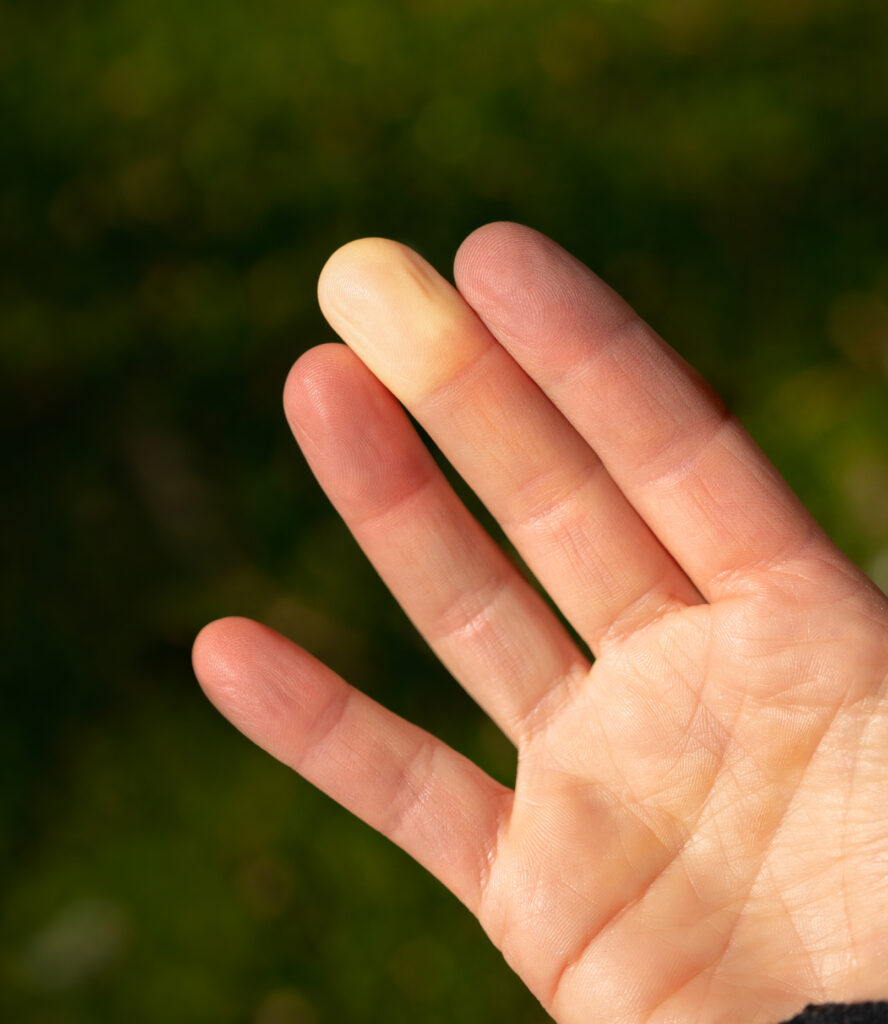
Raynaud's is a syndrome arises when the blood flow is restricted to the body’s extremities such as fingers and toes. It is a vascular condition which means that it affects the blood vessels in the body.
Most common symptoms include the fingers and toes changing colour, and this can be associated with pain, numbness and pins and needles.
Attacks usually happen from exposure to cold or from emotional stress and anxiety. The attacks can last from a few minutes to a few hours.
There are two forms of Raynaud’s disease:
- Primary form, where the symptoms are typically mild and include sensitivity to cold and reduced sensation to touch but the exact cause of this is unknown.
- In secondary form the symptoms are more severe, and they are often caused by another health condition such as lupus and scleroderma.
The symptoms can also be caused through exposure to vibration such as a long history of working with vibrating tools and machinery and this is what I will be discussing here.
This secondary form of Raynaud’s is called Hand Arm Vibration Syndrome (HAVS) and it causes more significant symptoms than the primary form. HAVS often comes with symptoms of numbness in fingers and difficulty using hands such as loss of strength and grip. It is accompanied by whitening of the fingertips. This is caused when the nerves, blood vessels and joints in the hands, wrists and arms have been damaged because of the consistent use of vibrating tools.
Up to 1 in 10 people who work regularly with vibrating tools may develop HAVS. Most common vibrating tools which have been linked to causing HAVS include jackhammers, power drills, pneumatic drills and chainsaws, but there are several other vibrating tools which can also be the cause.
HAVS cannot usually be reversed, however, symptoms can get better, and they can be prevented from getting worse by stopping use of vibrating tools.
The number of cases of HAVS has significantly reduced over the last few decades as employers have become aware of how to reduce the risks of vibration exposure.
Employers have a duty to take reasonable care for their employees’ safety, and must therefore assess, identify, and eliminate or reduce risks from exposure to HAVS. This means they must inform employees of the risks associated with using vibrating tools, provide them with relevant training and safety equipment such as vibration absorbing gloves and offer regular health surveillance.
If an employee has suffered with HAVS because of their work, they may be able to pursue a civil claim against their employer. In order to do this the employee must prove through supportive medical evidence that they have suffered with symptoms of HAVS, that they have been subject to significant vibration exposure at work and that there is no other underlying cause to account for the symptoms suffered.
How Can Timms Help?
If you are working with vibration tools and are experiencing symptoms of HAVS, then our personal injury team can offer further guidance and advise you whether you may have a claim against your employer. For further information, contact me on freephone 0800 011 6666.




